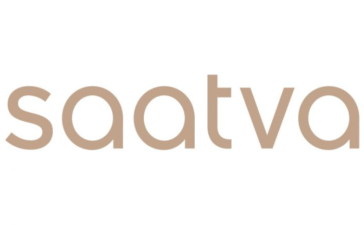First impressions matter, especially in the professional world. How you dress in the office can have a significant impact on how you’re perceived by your colleagues and superiors. It’s essential to make a good impression, as it can directly influence your career success. Whether you’re starting your first job or looking to refresh your wardrobe, this ultimate guide to professional office attire will help you master the art of dressing professionally and impress your boss.

Why Professional Dressing is Important
The way we dress speaks volumes about who we are as individuals, and when it comes to the professional world, this is particularly important. In the workplace, our attire serves as a reflection of our values, our work ethic, and our level of professionalism. First impressions are key, and dressing professionally can be the difference between landing that big promotion or losing out to a colleague. When we dress well, we also feel confident, which can greatly improve our overall performance. By taking the time to invest in a professional wardrobe, we not only show respect to ourselves but also to those around us. It sends a message that we take our work seriously and are ready to tackle any challenge that comes our way. So, if you want to make a lasting impression and succeed in your career, mastering professional dressing is essential.

Understanding the Dress Code
Every office has its own unique dress code, and it’s important to understand what’s expected of you. The dress code may be formal, semi-formal, business casual, or casual.
Formal dress codes require employees to wear traditional business suits, dress shoes, and dress shirts. For women, it may include pantsuits or skirt suits, along with stockings or tights. For men, it typically involves a suit and tie.
Semi-formal dress codes allow for more flexibility but still require a certain level of sophistication. For women, it may involve a tailored dress or skirt with a blouse. For men, it could be a blazer or sport coat paired with dress pants.
Business casual dress codes allow for more comfort but still require a professional appearance. For women, it may involve slacks, blouses, or dresses. For men, it could be a collared shirt with dress pants or khakis.
Casual dress codes are the most relaxed, but it’s important to still look put together. For women, it may involve jeans or shorts with a blouse or T-shirt. For men, it could be a polo shirt with jeans or khakis.
Understanding the dress code is crucial, as it sets the tone for how you should dress in the office. Make sure to review the dress code policy and ask your employer for clarification if needed. Always err on the side of caution and dress more formally than needed, especially when first starting a job.

Women’s Professional Attire:
Women have a lot of options when it comes to professional attire, but it’s important to choose something that is not only professional but also comfortable and flattering. Here are some tips to help you master women’s professional dressing:
- Suits: A suit is always a safe and stylish option for women’s professional attire. Opt for a classic cut with straight-leg trousers and a fitted blazer in neutral colors like black, grey, or navy blue. You can always add some personality with a statement blouse or colorful accessories.
- Dresses: Dresses can also be a great choice for professional attire. Choose a classic style in a neutral color and pair it with a blazer or cardigan to add a more professional touch. Avoid overly short or revealing dresses, and make sure your dress is not too tight or too loose.
- Blouses: A classic button-down blouse is a versatile piece that can be dressed up or down. Opt for a white or light-colored blouse and pair it with a pencil skirt or tailored trousers. You can also add some color or pattern with a printed blouse, but make sure it’s not too bold or distracting.
- Shoes: Your shoes are an important part of your professional attire. Opt for closed-toe shoes in a classic style like pumps or loafers. Avoid anything too high or too casual like sneakers or sandals.
- Accessories: Simple and understated accessories like a watch, stud earrings, or a leather handbag can add a professional touch to your outfit. Avoid anything too flashy or distracting like statement necklaces or oversized earrings.
Remember, your professional attire should make you feel confident and comfortable while also showing respect for your workplace and colleagues.

Men’s Professional Attire:
Men’s professional attire can vary depending on the industry and dress code, but some general guidelines apply. Generally, professional attire for men involves a suit or dress pants and a button-up shirt. Here are some tips to help you create the perfect professional outfit:
- Choose the right suit: The fit of your suit is crucial, so make sure you find a suit that fits your body type perfectly. Your suit should be tailored to your measurements and should be made from high-quality materials. For most industries, a navy or dark gray suit is appropriate.
- Pick the right shirt: Your shirt should be crisp, clean, and fitted. White or light blue shirts are classic and work well in most settings. Avoid shirts with busy patterns or bold colors.
- Wear the right shoes: Your shoes should be clean, polished, and appropriate for the occasion. Oxford or dress shoes are a good choice. Make sure your shoes match your belt and watch.
- Accessorize appropriately: A simple tie is a great accessory to complete a professional outfit. Avoid bright or flashy ties and stick to classic patterns like stripes or polka dots.
- Dress for the season: Make sure you dress appropriately for the weather. A lightweight suit is appropriate for warmer weather, while a heavier suit is suitable for colder weather.
Remember, professional attire should be clean, neat, and conservative. Your clothes should be comfortable, but not too casual. Dressing professionally will help you feel more confident and impress your boss and colleagues.

Tips for Choosing the Right Outfit:
Once you have an understanding of your company’s dress code and the basic rules of professional dressing, it’s time to choose the right outfit. Here are some tips to help you put together a polished and professional look:
- Stick to classic colors and styles. Black, gray, navy and white are always safe choices. Stick to classic styles like tailored pants, pencil skirts, and blazers that will never go out of style.
- Consider the weather. You don’t want to be too hot or too cold in the office, so make sure you dress appropriately for the temperature. If you’re unsure, ask your colleagues or HR for guidance.
- Choose comfortable clothes. You don’t want to be fidgeting with your outfit all day, so make sure your clothes fit well and are comfortable to wear. Avoid anything too tight or restrictive.
- Accessorize strategically. Simple jewelry, a watch, and a handbag can elevate your outfit and make it look more put-together. However, avoid anything too flashy or distracting.
- Dress for the occasion. If you have an important meeting or presentation, consider dressing a little more formally than usual. On the other hand, if it’s a casual Friday, you can be a little more relaxed with your outfit.
- Don’t forget about grooming. A polished appearance isn’t just about the clothes you wear. Make sure your hair is neat, your makeup (if you wear any) is minimal and professional-looking, and your shoes are clean and polished.
By following these tips, you can ensure that you’re always dressed appropriately and professionally, no matter what the occasion.

Mistakes to Avoid When Dressing Professionally:
Dressing professionally can be tricky, especially if you’re not sure what’s appropriate and what’s not. Here are some common mistakes to avoid when dressing for the office:
- Revealing too much skin: When it comes to professional attire, less is not more. Keep hemlines, necklines, and sleeve lengths appropriate and avoid anything too revealing. Stick to knee-length skirts or pants and tops that cover your shoulders and cleavage.
- Wearing wrinkled or stained clothes: You want to look put-together and professional, so make sure your clothes are clean, pressed, and free of stains.
- Wearing overly casual clothes: Jeans, t-shirts, and sneakers are usually not appropriate for a professional setting. Stick to more formal attire like tailored pants, blouses, and dress shoes.
- Forgetting to accessorize: Accessories can help elevate an outfit and make it look more polished. Don’t forget to add a watch, simple jewelry, and a belt if needed.
- Wearing uncomfortable shoes: It’s hard to look professional when you’re hobbling around in uncomfortable shoes. Avoid flip-flops, sandals, or any shoes that are too casual.
Final Thoughts on Professional Dressing
The professional dressing is a crucial aspect of building a successful career. Whether you’re attending a job interview, meeting with clients, or presenting to your boss, your attire speaks volumes about your competence, professionalism, and attention to detail. The right outfit can enhance your confidence, make you stand out positively, and give you a competitive edge in the workplace.
However, mastering professional dressing is not just about following strict rules or adhering to a specific dress code. It’s about understanding the expectations of your industry, company culture, and personal style, and finding a balance between professionalism and individuality.
By following the tips and guidelines outlined in this guide, you’ll be on your way to mastering professional dressing and making a lasting impression in your workplace. Good luck!







